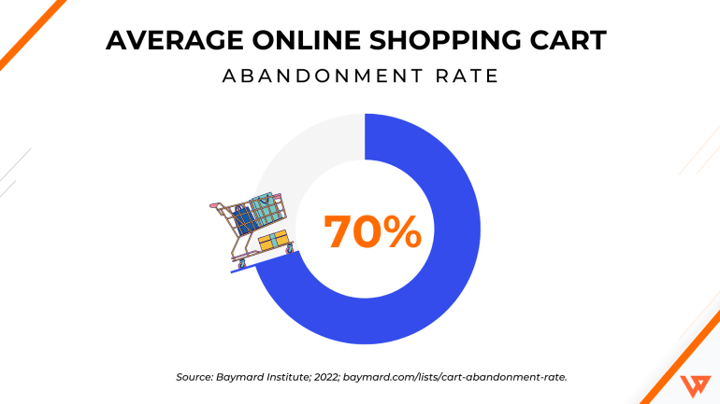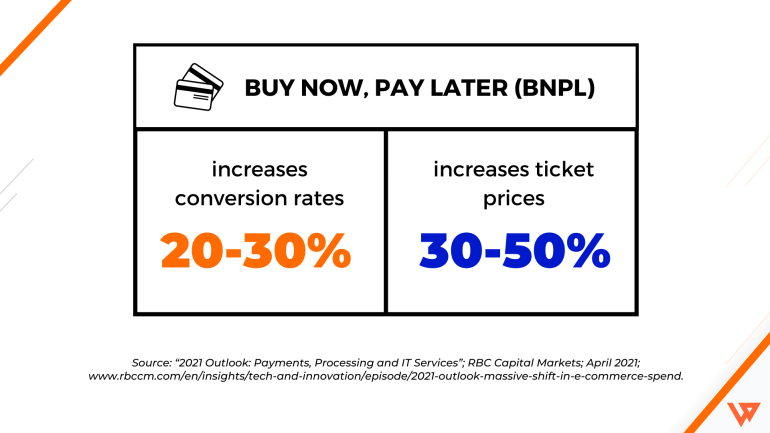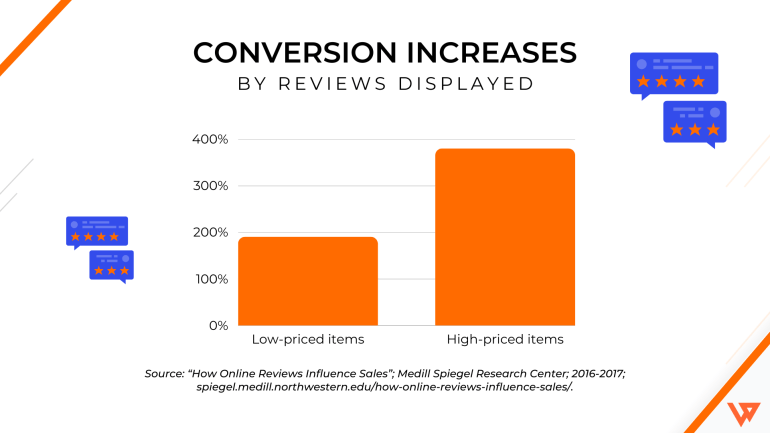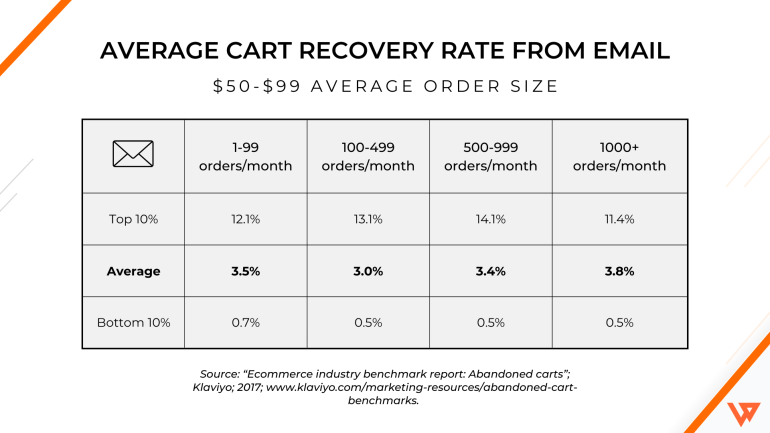
How to Reduce Cart Abandonment Rates in Ecommerce
Contents
Have you ever added something to your online shopping cart but didn’t complete the purchase? Maybe shipping was too expensive, or you didn’t have your credit card information handy.
If the answer is yes, you’re not alone. Online shoppers participate in cart abandonment at an average rate of 70%, says research from the Baymard Institute.
As a whole, cart abandonment costs ecommerce stores an estimated $18 billion annually. And as an ecommerce store owner, there’s nothing more frustrating than spending time and money acquiring leads only for them to bail at the last second.
But don’t worry. There are a few ways to reduce cart abandonment rates:
- Streamline the checkout process.
- Offer multiple payment options.
- Test free shipping.
- Use chatbots to improve customer support.
- Ensure secure checkout.
- Add customer reviews on product pages.
- Improve your page speed.
- Re-engage with customers with cart recovery emails.
Explore this resource for deeper insights on reducing cart abandonment, converting leads into paying customers, and boosting your bottom line.

1. Streamline the checkout process
The checkout process is an essential part of your customer’s journey. It’s the last hurdle between them and their purchase. And it can make or break a sale. The longer it takes customers to complete this process (and the more hoops they have to jump through), the more likely they’ll leave.
To reduce cart abandonment rates and increase conversion rates, streamline your checkout process to reduce unnecessary friction. For instance, provide a guest checkout option that doesn’t require new customers to create an account or returning customers to sign in.
Odds are customers don’t want to provide more information than necessary — or forgot their account passwords. Adding Facebook or Google login options are another excellent alternative to allow shoppers to register without adding friction.
Sometimes less is more. But don’t skimp on your online store’s user interface and design. A well-designed ecommerce landing page can make it easier for customers to review orders and complete purchases.
For example, adding an order preview summary can help reduce shopping cart abandonment rates. You can even provide edit access to add or remove items directly from the cart. Take it one step further by optimizing mobile checkout to ensure smooth processes across devices.
Finally, conduct usability tests with your ideal customers to better understand how they engage with the checkout process. This can give you insights into order completion, time to checkout, where click behavior, and more.
Some tools allow you to ask customers to rate the difficulty of completing specific tasks. These ratings can provide additional insights on further optimizing your checkout process.
2. Offer multiple payment options
Think about the last time you went shopping. Did you reach for the same credit card? Or are you a PayPal-only type of person?
We all have our preferred payment method. For instance, some people use specific credit cards to maximize reward points whenever they shop. Others dislike entering their credit card information every time they want to purchase something and prefer buy-now or one-click checkout.
So if you aren’t offering a variety of payment methods in your checkout process, you could lose out on a significant chunk of sales. Some of the most widely used payment methods include:
- Credit or debit cards (Visa, MasterCard, American Express)
- Digital wallets (Shop Pay, PayPal, Apple Pay, Google Pay, Meta Pay)
- Buy now, pay later services (Klarna, Affirm, AfterPay)
Research shows that allowing customers to spread the cost of the purchase over smaller monthly payments can boost conversion rates up to 30%. So why not reduce cart abandonment by adding these alternate payment methods to your checkout process?

3. Test the waters with free shipping
It should be no shock that most cart abandonment — 48%, according to Baymard’s research — results from additional costs at checkout.
Amazon Prime has amassed over 200 million members due to free two-day shipping. And as a small online store, you might not have access to Amazon’s shipping network to help reduce shipping costs. But don’t worry. You have a few options.
First, lump the shipping cost into the product’s price. That way, you aren’t cutting into your margins to support free shipping for customers.
You can also set a minimum spend to qualify customers for free shipping, something many consumers have come to expect. Or consider partnering with a courier service for better rates or same-day delivery options.
If none of these options suit your business model, consider cost transparency. For example, some sites use search functions to help customers see delivery prices by location.
Overall, the last thing customers want to see at checkout is a $15 shipping fee on a $20 order. They’ll run straight into the open arms of big-box retailers that offer the same products with free shipping.
4. Use chatbots to improve customer support
Customers crave personalized experiences online. And when they don’t get help immediately or can’t find what they are looking for, they’ll bounce from your site in search of something more suitable.
Chatbot platforms can improve customer experiences with quick, personalized responses to customer queries. And they can address any issues that might cause a customer to abandon their cart.
For instance, chatbots provide customers with helpful reminders and notifications. These alerts allow customers to stay on top of their shopping processes and ensure they don’t forget about their carts.
Chatbots can also help spruce up the shopping experience. They can share product recommendations or help customers find the right sizes and colors for the items they want.
By providing customers with a better shopping experience, you can reduce shopping cart abandonment rates and stop your customers from landing in your competitors’ laps.
5. Ensure secure checkout
As an ecommerce store, you collect quite a bit of personal information from customers like their name, email address, credit card information, and shipping address.
With scamming and cybersecurity threats on the rise, some customers hesitate to pass this sensitive information to just any website. In fact, 18% of consumers in Baymard’s research said a lack of trust was the top reason for cart abandonment.
To reduce cart abandonment due to trust, add points of trust on your site to build confidence among visitors. Start by focusing on the security side of things. For example, some tools can add an SSL certificate to confirm that any credit card information shared is secure.
6. Add customer reviews to product pages
Social proof, or evidence of satisfaction among other customers, can also build customer trust. Examples of social proof include online reviews, celebrity endorsements, and customer testimonials.
Posting just five reviews with a product increased the likelihood of a purchase by 270%, compared to a product with no reviews, a study from the Spiegel Research Center found.
Similarly, conversions increased 190% when businesses displayed reviews for low-priced items and 380% for high-priced items. Regardless of price, it doesn’t hurt to read positive reviews while considering a purchase.

7. Increase your page speed
Your website is your storefront, so making an excellent first impression is crucial. And modern online shoppers expect your product pages to load quickly.
If someone visits your website and it takes a long time to load, they may become frustrated and leave, leading to fewer sales and a poor customer experience.
Search engines consider page speed when ranking websites in search results. A slow ecommerce page could result in less organic traffic to your site. Less organic traffic means fewer opportunities to convert visitors into paying customers.
Even a few seconds of delay in your page speed can affect a customer’s decision to complete a purchase. So if your ecommerce site isn’t loading within five seconds, or even close to that, run it through a page speed insights tool.
It’ll provide you with everything you need to know about reducing load times and help you meet the five-second benchmark for most ecommerce stores.
8. Re-engage with customers with cart recovery emails
Even if you implement the above strategies, some customers will likely abandon their carts. We’re all busy humans, and sometimes life gets in the way. But this is where retargeting campaigns can help.
Retargeting campaigns are an excellent way to reduce cart abandonment by reminding people where they left off and encouraging them to complete their purchases. For instance, cart recovery emails have a proven track record of scoring higher open rates than standard email marketing campaigns.
A good cart recovery email should include a reminder of the product the shopper left behind and offer additional incentives like free shipping or a discount code. Build a cart recovery email series and stagger their send dates over time.
The first email might offer a 10% discount, while the second and third might offer a BOGO code or free shipping. One resource suggests businesses with an average order size between $50 and $99 that see up to 99 orders per month can expect an average recovery rate of 3.5% with a cart recovery campaign.
Finally, embedded analytics can provide detailed information on customer behavior around cart abandonment. Use this data to further personalize retargeting campaigns and re-engage customers.

Reduce cart abandonment and boost your bottom line
Reduce cart abandonment by optimizing the checkout process, ensuring the payment process is secure and easy, lowering extra costs and fees, and building trust with your customers. With these strategies, you can stop leaving money on the table and stand out from the crowd.
And when you’re done reducing cart abandonment, consider how you want to manage all those recovered orders. Ecommerce automation software is the easiest and most effective way to make sure every bit of order and expense data makes it to your accounting platform.
From syncing order data across your sales channels to giving you a central hub for inventory management and product listing, ecommerce automation significantly reduces busywork. Automate for error-free ecommerce. No more mishandling taxes, missing shipping deadlines, and mismatched platforms.
Guest contributor: Ioana Wilkinson
Ecommerce automation reduces busywork and helps you sell in more places
GET STARTED FOR FREE



 The Webgility Team
The Webgility Team


